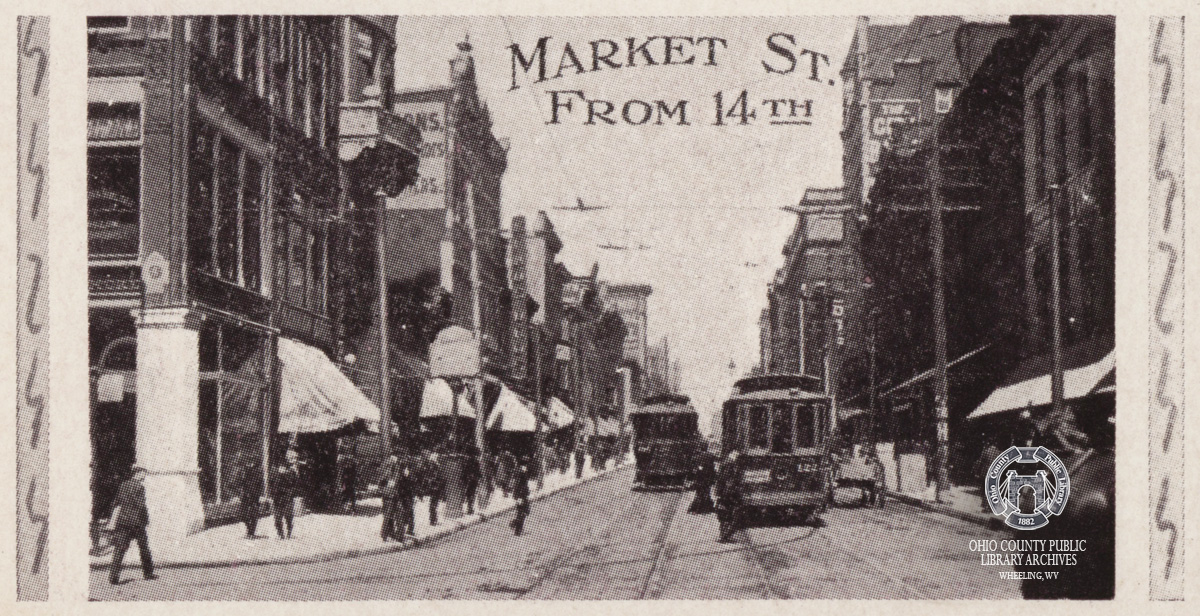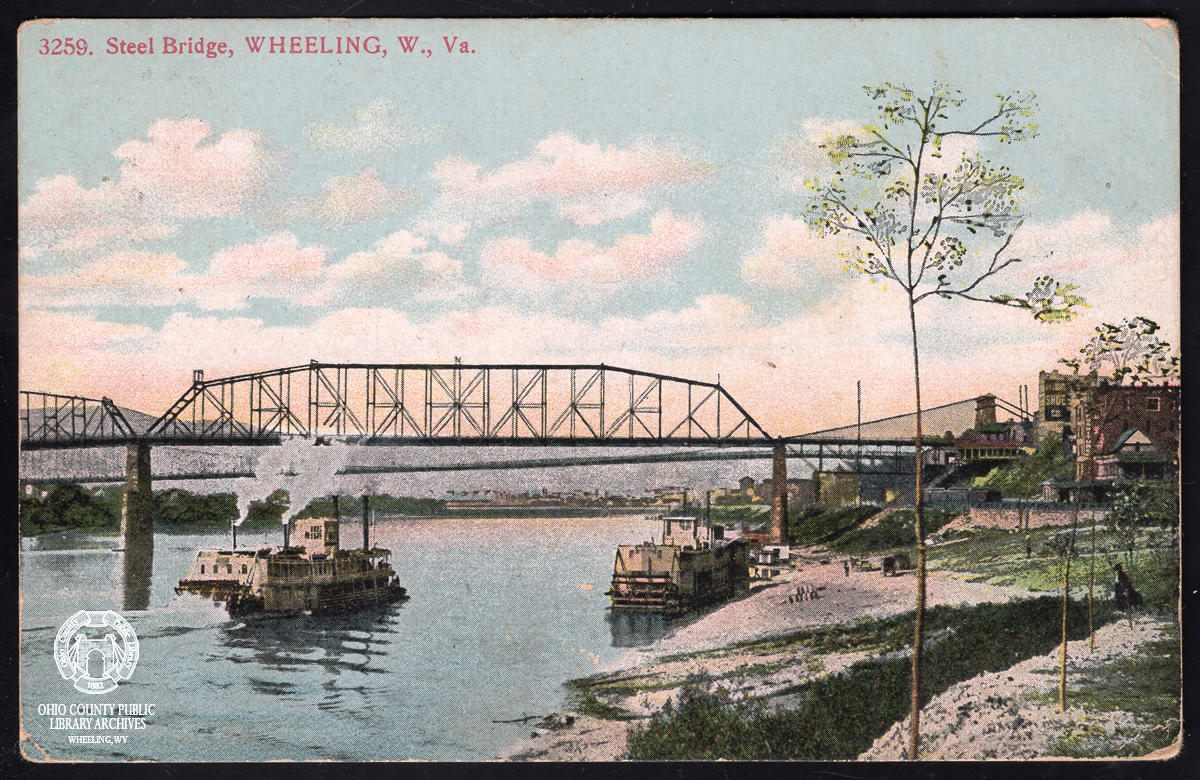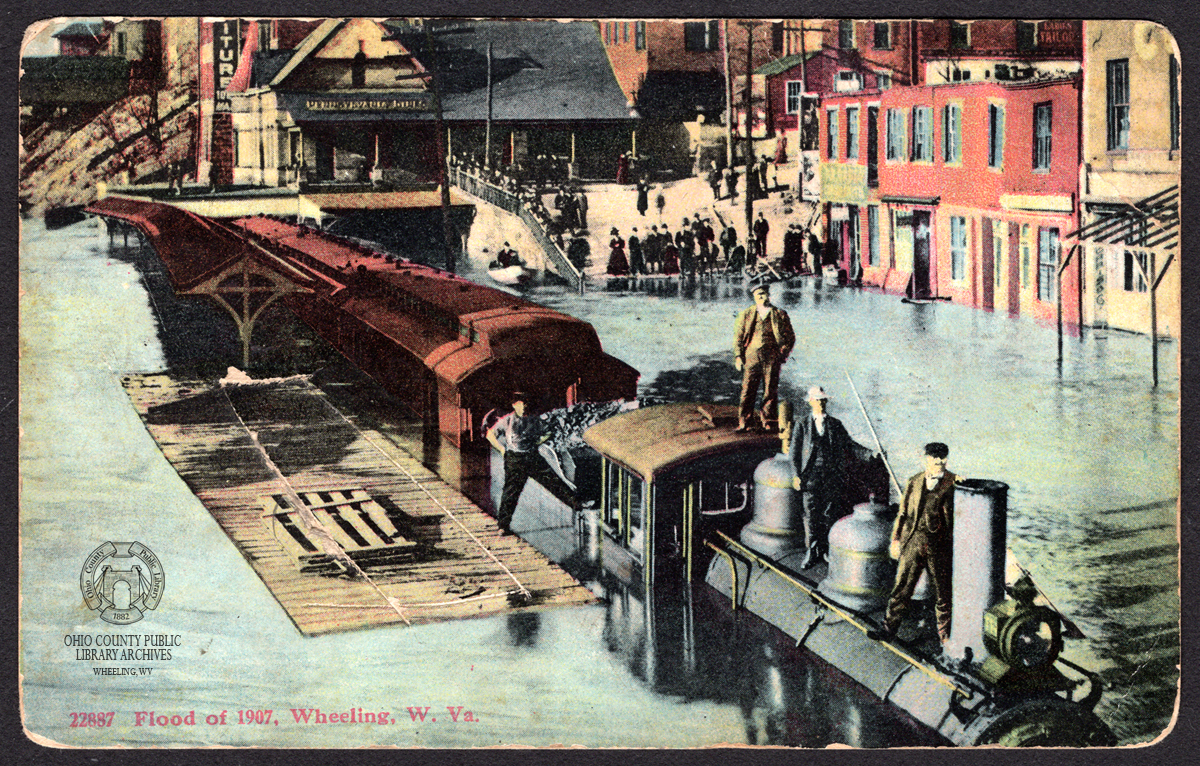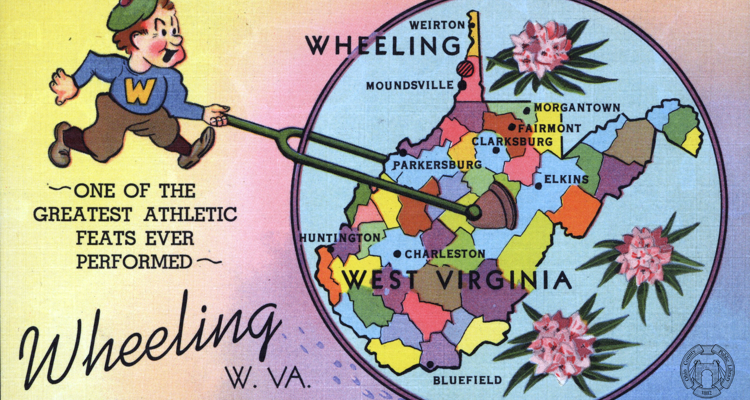Summer usually means beach vacations and traveling to exciting new destinations. This year, amid the COVID-19 pandemic, travel has been drastically affected. While it may not be advisable to fly off to far-away lands, we can still escape into the past by exploring Wheeling’s historic postcards.
Postcards, which can be traced back to the mid-1800s, skyrocketed in popularity at the turn of the century. Following the Chicago World’s Fair in 1893, souvenir postcards and picture postcards increased in production across the United States. However, the production of postcards declined after 1909 with higher tariffs on imported ink, largely from Germany.
Following World War I as telephone communication began to replace postcard writing, the imagery on the postcards transitioned to scenic views, humor and fashion.
These scenic view postcards provide a special peek into Wheeling’s past and a sense of escapism — all while staying at home.
The Ohio County Library has hundreds of postcards of Wheeling to explore online. During an investigation into some of these treasures, three particular images stood out as key representations of their time. The postcards of Market Street from 1903, the Steel Bridge and the flood of 1907 with a submerged train highlight the history and mood of Wheeling throughout the early 20th century.
MARKET STREET 1903
At the turn of the century, Wheeling was a growing port on the Ohio River. Market Street, in particular, highlights the importance of the business and shopping as the center point of commercial, social and political dealings of Wheeling. The postcard of Market Street provides a glimpse of the environment of 1903.

The bustling street — with people chaotically crossing and streetcars running — sparks curiosity. Are they running to the streetcars? Was this an everyday occurrence? Would there be people rushing everywhere down the street at any time or was this special? Would it feel different to walk down a street and see the streetcars and carriages rather than the bustling street traffic of today? Would there be an overwhelming sense of quiet without the cars rushing by?
WHEELING’S STEEL BRIDGE
The steel bridge includes two steamboats along the undeveloped coastline of Wheeling. Differences in transportation and development since this postcard was made stand out as an example of the changes in Wheeling over the last 100 years. Starting from an almost empty space next to the Ohio River to busy bridges crossing the river, Wheeling’s steel bridge was opened in 1891 and spanned the river until its demolition in 1962. This bridge was a feature of innovation in Wheeling as the first steel bridge originally promising a toll-free pedestrian passage to and from the island. Today, there are a number of bridges crossing the Ohio River and connecting the people of Wheeling.

WHEELING UNDERWATER
In 1907, one of Wheeling’s worst floods devasted the city with the water cresting at 50.1 feet. Trains were submerged in water, and boats were employed to help citizens move throughout the city. The 1907 postcard illustrates the Flood of 1907 and its impact on Wheeling.
There is a sort of absurdity to the image with people standing on top of the flooded train and a large crowd of onlookers standing at the edge of the water. This postcard prompted an escapism into 1907 Wheeling — how would everyone react to a flooded train? Consider who would run to see the rising tides and those who would stay as far away as possible.

WHERE WILL YOU GO?
Although these postcards illustrate the city in black and white and in vibrant color, they are just the beginning of discovering adventure in your own backyard. Each postcard introduces a moment in time and invites the viewer to dig deeper by investigating other images, imagining yourself in the time, or even creating your own postcards. Maybe it’s your own street, a building downtown or an image that sparks your curiosity, but each of these allows a chance to look at these postcards and imagine Wheeling as it was before.
• Alex Warren is a graduate student at Duquesne University studying for a master’s degree in public history after completing her undergraduate degree at Marquette University in 2019. Alex is currently interning with Wheeling Heritage and is enjoying learning about Wheeling by evaluating historical signs around the city.



